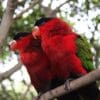Purple-bellied Lory
Also known as:
Eastern Black-capped Lory, Louisade Lory
Also known as:
Eastern Black-capped Lory, Louisade Lory
DID YOU KNOW?
The Purple-bellied Lory is the only parrot with a bright, white cere (area around nostrils).

Lorius

hypoinochrous
Size:
26 cm (10 in)
Weight:
200-240 g (7-8.4 oz)
Subspecies including nominate:
three: L.h. hypoinochrous, L.h. rosselianus, L.h. devittatus
Colour Adult:
L.h. hypoinochrous: Both adults in general red, paler on breast; darker red upper abdomen; black forehead and lores to occiput, glossed purple; green wings; blue/purple thighs and lower abdomen; greater underwing coverts red with black margins; underwing band yellow; red tail, widely tipped with dark blue/green. Beak coral red. Cere white. Eye orange/red.
L.h. rosselianus: As in hypoinochrous, but breast same dark red as upper abdomen.
L.h. devittatus: Greater underwing coverts lack black margins.
Colour Juvenile:
L.h. hypoinochrous: As in adults but beak brown. Eye brown.
L.h. rosselianus: As in adults.
L.h. devittatus: As in adults but black margins to greater underwing coverts present in some juveniles.
Call:
Calls are described as distinctively nasal and also mournful. More prolonged and high-pitched than that of L. lory.
More Information:
Content Sources:
CITES
BirdLife International
Cornell Lab of Ornithology/Birds of the World
Parrots: A Guide to Parrots of the World, Juniper and Parr, 1998
Parrots of the World, Forshaw, 2006. 2010 edition
Lexicon of Parrots, Thomas Arndt.
Captive Status:
Not usually seen in aviculture.
Longevity:
—
Housing:
Aviary or suspended enclosure with well-drained concrete floor and tiled surround.
Diet:
Nectar, a commercial type or homemade from lactose-free baby cereal, honey, malt extract or molasses, mixed with filtered water and made fresh once or twice daily, adding wheat germ as well if desired; fruits (once or twice daily) such as: apple, pear, orange, cactus fruits and bananas, and one or more of the following items daily: carrot, fresh corn on the cob or tinned, unsalted corn, green leaves such as Swiss chard, lettuce or kale; rearing food made from hard-boiled egg, wholegrain bread, low-fat cheese and carrot all ground to crumbly consistency.
Enrichment:
—
Nest Box Size:
Vertical box 30 cm x 30 cm x 60 cm (12 x 12 x 24 in).
Clutch Size:
2
Fledging Age:
Probably 11 weeks.
Hatch Weight:
—
Peak Weight:
—
Weaning Weight:
—
World Population:
Unknown but described as common to abundant. Decreasing.
IUCN Red List Status:
Least Concern
CITES Listing:
Appendix II
Threat Summary:
Not globally threatened. This species is considered to have a medium dependency on forest habitat, and tree cover in its range is estimated to have declined by 13.5% over the past three generations. Therefore it is tentatively suspected that this may have led to a 1-19% decline in the species’ population size over the same period.
Range:
L.h. hypoinochrous: Misima and Tagula Islands, in Louisiade Archipelago, E Papua New Guinea.
L.h. rosselianus: Rossel Island, in Louisiade Archipelago.
L.h. devittatus: Trobriand and Woodlark Islands, D’Entrecasteaux and Bismarck Archipelagos, and E Papua New Guinea, west in south to Cape Rodney and in north to Huon Gulf.
Habitat:
Found up to 1600 m (5248 ft) in coastal vegetation, mangroves, coconut plantations, forest, forest edge, secondary growth, partly cleared or inhabited areas and gardens.
Wild Diet:
Forages on fruit of the savanna tree Antidesma gaisambulla, flowers of Plerandra, blossoms or very tiny fruits of coconut trees.
Ecology and Behaviour:
Found in singles, pairs or small groups of up to 20 birds. Noisy and conspicuous. Feeds in middle canopy. Will sometimes associate with Sulphur-crested Cockatoos and Eclectus Parrots.
Clutch and Egg Size:
2 eggs.
Breeding Season:
Recorded at mid-year; nest is in cavity high up in tree.
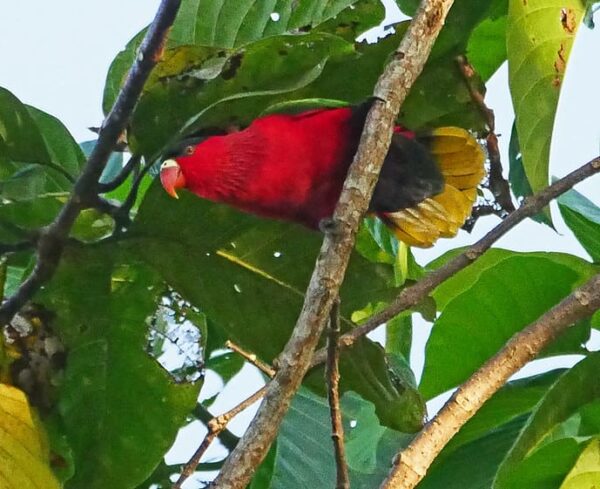
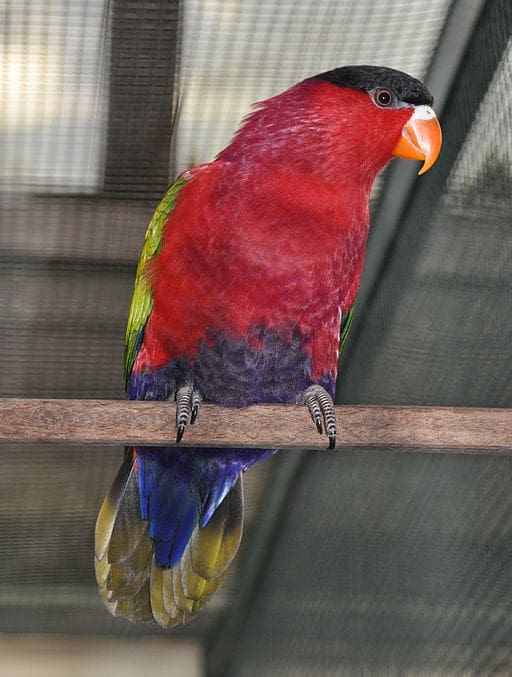
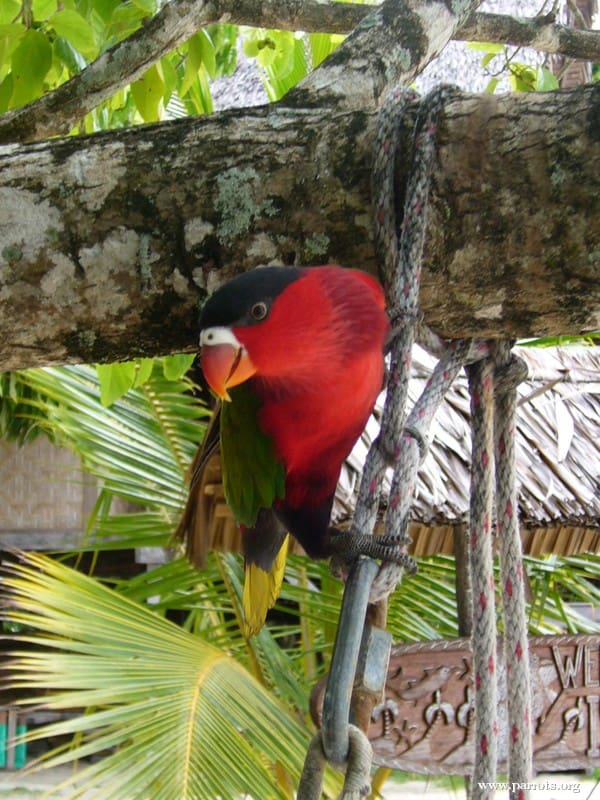
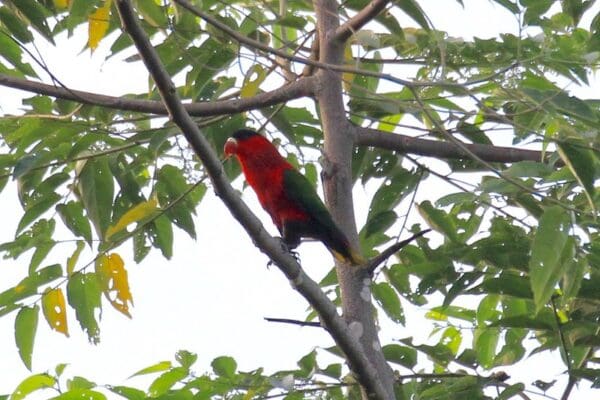
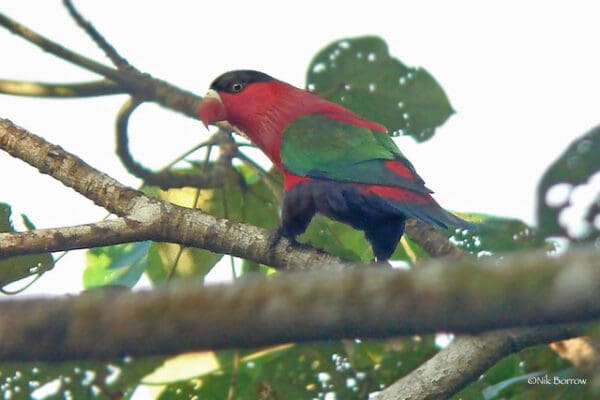
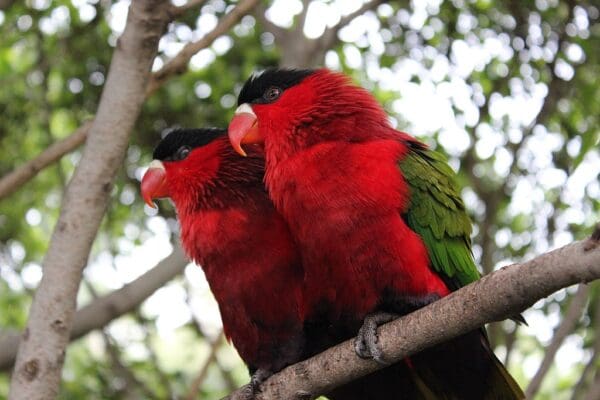
![© Nik Borrow [CC BY-NC 2.0] via Flickr A wild Purple-bellied Lory perches in a tree](https://parrots.org/wp-content/uploads/2023/01/wpt_Purple-bellied-Lory_1240-4-e1732564364800-100x100.jpg)
![© Quartl (Own work) [CC BY-SA 3.0] via Wikimedia Commons A companion Purple-bellied Lory perches in an enclosure](https://parrots.org/wp-content/uploads/2023/01/wpt_Purple-bellied-Lory_1240-2-100x100.jpg)
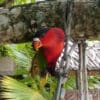
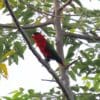
![© Nik Borrow [CC BY-NC 2.0] via Flickr A wild Purple-bellied Lory perches on a limb](https://parrots.org/wp-content/uploads/2023/01/wpt_Purple-bellied-Lory_1240-3-100x100.jpg)
